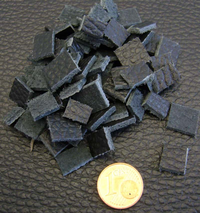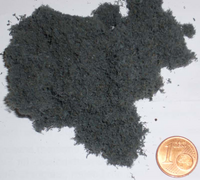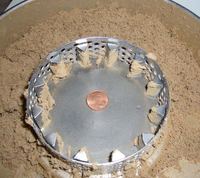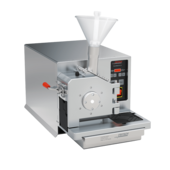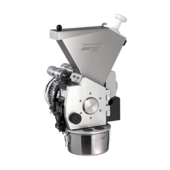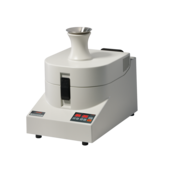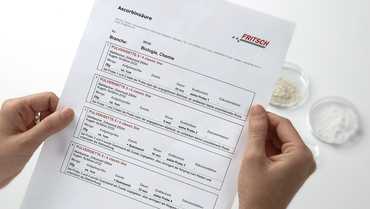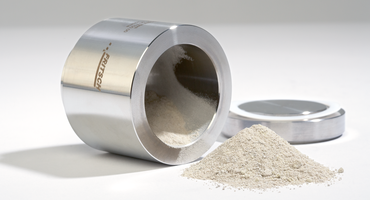Voltar à visão geral
Milling of leather for sample preparation
We recommend for this the Universal Cutting Mill PULVERISETTE 19. This mill distinguishes itself through especially easy maintenance – it is easily cleaned. Is a small amount of carry over between the samples tolerable, then the Cutting Mill PULVERISETTE 15 may also be used.
In the concrete task, only 5 g of leather was to be comminuted though. The production of small chunks of leather through punching is no problem and in addition, guarantees a good profile of the to be examined material. First of all, for the test, leather pieces with approximately 1 cm edge length were cut with scissors. These boundary conditions allow the use of the Variable Speed Rotor Mill PULVERISETTE 14 classic line. The rotational speed of the rotor was adjusted to 16.000 r/min and a 4 mm sieve with a round perforation used.
The dark and extremely thick leather must be pre-comminuted below 1 cm edge length and then slowly dosed. This keeps the thermal burden in acceptable boundaries. The result surprised everyone involved: a very voluminous material evolves. The in this manner won leather sample was used for the determination of the ph-value. Not quite so difficult was the comminution of thinner, brown leather, similar to leather jackets which consumers are familiar with.
-
Download the FRITSCH-report as PDF file
-
Detailed grinding reports
Voltar à visão geral

